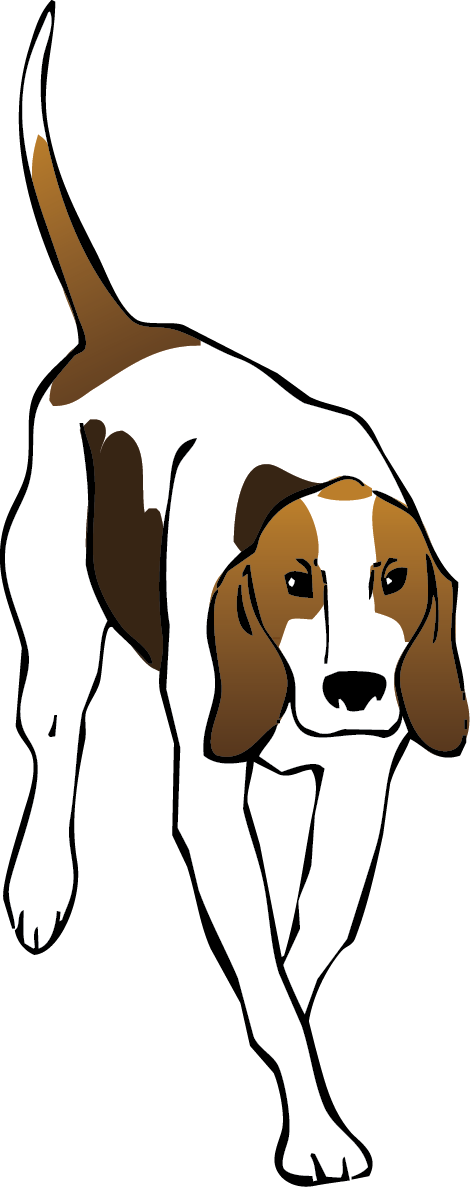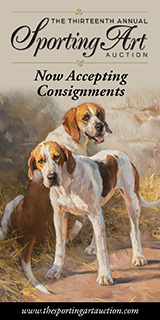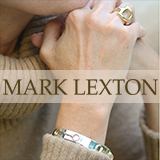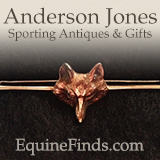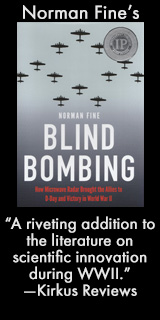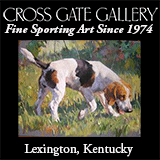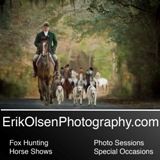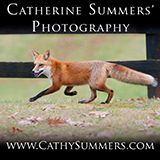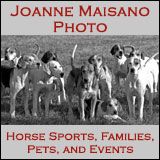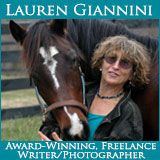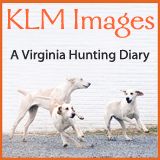Hugh Robards
You Ask; We Answer
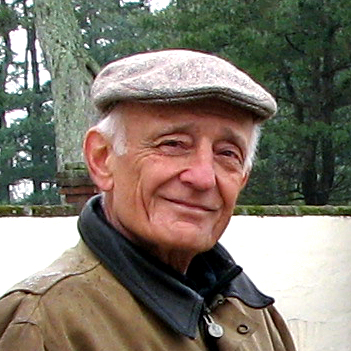 As the new season begins, I want to remind readers about one of Foxhunting Life’s features—our Panel of Experts. Every foxhunter has the occasional question, whether it be what the huntsman, the whipper-in, or the hounds are doing; the meaning of an arcane hunting term; breeding or judging hounds; correct attire; a point of etiquette; training the field hunter; even sporting art or literature.
As the new season begins, I want to remind readers about one of Foxhunting Life’s features—our Panel of Experts. Every foxhunter has the occasional question, whether it be what the huntsman, the whipper-in, or the hounds are doing; the meaning of an arcane hunting term; breeding or judging hounds; correct attire; a point of etiquette; training the field hunter; even sporting art or literature.
I have found over the years that while there are no bad questions, sometimes there are bad answers! In the belief that our readers deserve only authoritative answers, we assembled a Panel of Experts whose breadth of knowledge and proven experience was unassailable.
Questions tackled by our Experts have included: why does a fox bark, what triggers the spring dance of huntsmen from one hunt to the next, are there different types of foxes in England, how to handle a hound that is shy of men, can foxhounds make good house pets, how to retrain a horse that exits the trailer like a cannonball, why is an afternoon after-hunt meal called a hunt breakfast, what is a July hound, what is the origin of ratcatcher, and many, many more. To see the answers to those questions and others, go to the Ask the Experts dropdown menu and click on Questions and Answers.
The Blue Birdseye Stock Tie: A Smashing Style from the Past
Karen Ewbank is ready for cubhunting in her blue birdseye stock tie.
I want to tell you about a little-known yet colorful article of foxhunting attire from the past that deserves to be resurrected. When I first saw it under the huntsman's scarlet coat I asked myself, “What in the world is that man wearing about his neck?”
Here was an experienced foxhunter who had been a professional huntsman and whipper-in for world-class packs in England, Ireland, and America, yet he appeared to be oblivious to “proper” foxhunting attire. I’m referring to Hugh Robards, huntsman of the Middleburg Hunt. Robards is also an author, a student of the noble art, and possesses an extensive library. I thought he should have known better, but I didn’t want to embarrass him, so I didn’t ask.
It turns out that I was the ignorant one, but, I suspect, I’m not alone in this particular matter. Robards, I was to learn, was wearing a striking article of traditional foxhunting attire—a blue birdseye stock tie—under his scarlet coat. During his twenty-seven-year stint as huntsman for Lord Daresbury at the County Limerick (IRE), both he and Daresbury wore their blue birdseye stock ties through the autumn hunting season.
How many foxhunters of today have ever heard of such a thing, I wonder? The better question, though, is wouldn’t it be great fun to bring back this handsome stock tie into our own hunting fields?
Hunt-to-Huntsman Relations: A Matter of Concern?
Sidney Bailey retired in 2005 after serving as professional huntsman for the Vale of the White Horse (UK) for forty-three seasons.Foxhunting Life readers demonstrate enormous interest in our articles covering the migration of huntsmen each year at about this time. (See “Huntsmen on the Move,” published last month.) Nancy Mitchell, who has hunted hounds at the Bijou Springs Hunt (CO) over a period of sixteen years, wants to know the why of it.
“I’m curious to know what motivates this ‘spring dance of the huntsmen,’” Nancy wrote. “What circumstances create this phenomenon? Money? Prestige? Politics? Age?”
We thought it was an interesting subject for our Panel of Experts, so we asked Jerry Miller, MFH, C. Martin Scott, ex-MFH, and Hugh Robards, ex-MFH, to weigh in on Nancy's question.
Your Human Faces Are Showing
Perhaps because I’ve seen so many serious photographs of hounds in kennels, I was arrested and amused by this whimsical print by Emily Robards, daughter of a well-known huntsman and author. Emily’s dad has hunted hounds in Ireland and in North America, and Emily has whipped-in to him and spent most of her younger years in or near the kennels. I asked her to tell us about her art.
"Your Human Faces Are Showing" by Emily Robards
I am a visual artist who works in a variety of media such as photography, printmaking, collage, embroidery and paint. My work draws from dreams and memories, linking the spiritual, human, and animal worlds together with an underlining narrative of innocence and the uncanny. The work arises from the self, drawing from my past, while trying to take control of the present. I also work a lot with vintage photographs and text combining them to create new narratives.
The piece, “Your Human faces are Showing,” is a seven-colour limited edition screen print, approximately 11.4 x 8 cm. The print is slightly off register so they are not all exactly the same, which is called a print variable.
The print is based on an old photo my grandmother took of the County Limerick Foxhounds. The piece started out as a doodle in my sketchbook a few years ago, and stayed that way until my last year of college when I made it into a print. The drawing is relaxed, almost comical. I wasn't worried about it being exact or anatomically correct. This relaxed idea towards the drawing I feel is what makes it a success.
Hugh Robards to Hunt Hounds for Middleburg Hunt
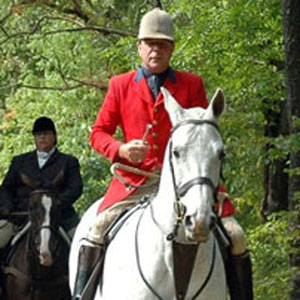 Hugh Robards cubhunting with the Rolling Rock HuntTalk about experience. Hugh Robards has spent fifty-three years in hunt service. He whipped-in to some of the legendary huntsmen in England—Brian Gupwell at the Eridge (later to become huntsman for the Duke of Beaufort), Percy Durno and Captain Ronnie Wallace at the Heythrop, and Charlie Wilkin at the Wynnstay.
Hugh Robards cubhunting with the Rolling Rock HuntTalk about experience. Hugh Robards has spent fifty-three years in hunt service. He whipped-in to some of the legendary huntsmen in England—Brian Gupwell at the Eridge (later to become huntsman for the Duke of Beaufort), Percy Durno and Captain Ronnie Wallace at the Heythrop, and Charlie Wilkin at the Wynnstay.
Upon Captain Wallace’s recommendation to Lord Daresbury, MFH of the County Limerick Foxhounds, Hugh moved to Ireland to take up his first post as huntsman. There he remained for twenty-seven seasons showing world-class sport to the Irish—none keener—and visiting sportsmen and women from around the globe.
After parting from the Limerick, he came to the U.S. to help rebuild the Rolling Rock Hunt (PA), remaining there as Master and huntsman until 2007. From Rolling Rock he moved to the Saxonburg Hunt (PA) where he served as huntsman until coming to the Middleburg Hunt last year as first whipper-in to huntsman Barry Magner. (Barry is moving to Australia this season, and we hope to catch our readers up with him in another article.)
“Hugh continually reinvents himself because of his love for his work,” said Juli Robards, his wife. “Transcending change is one of his great qualities, and I’m unabashedly one of his biggest fans!”
Those who have hunted behind him are big fans as well. Tony Leahy, who grew up in Ireland, is first vice-president of the MFHA and serves as Master and huntsman of the Fox River Valley Hunt (IL). “Hugh is without question one of the best huntsmen I’ve seen,” said Tony. “I remember hunting behind him at Limerick, and I’ve seen him do amazing things!”
Is Irish Hunting Really That Crazy?
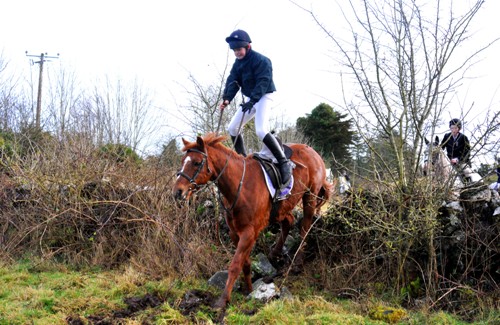 With the East Galway / Noel Mullins photo
With the East Galway / Noel Mullins photo
Denya Clarke, who hunted from childhood in Virginia, was an A-Pony-Clubber, and now lives and hunts in Ontario, posed a question about foxhunting in Ireland. She writes:
“Several of us are interested in hunting in Ireland, but it seems a matter of pride to the Irish to boast about the speed, dreadful weather, jumps onto roads, formidable ditches, intimidating banks, wire, rain, steep hills, rivers, and rocks that one will face hunting in Ireland. We're not chickens, but do the experts have any suggestions as to where or how to hunt in Ireland that doesn't require doubling (tripling) your life insurance and leaving your up-dated will in the lorry?”
We asked Hugh Robards and Noel Mullins to respond—Hugh, because he showed world-class sport as huntsman for the County Limerick foxhounds for twenty-seven seasons, and Noel, because he is a lifelong foxhunter and one of those guilty Irish journalists that Denya refers to in her question.
Is Irish Hunting Really That Crazy?
 With the East Galway / Noel Mullins photo
With the East Galway / Noel Mullins photo
Denya Clarke, who hunted from childhood in Virginia, was an A-Pony-Clubber, and now lives and hunts in Ontario, posed a question about foxhunting in Ireland. She writes:
“Several of us are interested in hunting in Ireland, but it seems a matter of pride to the Irish to boast about the speed, dreadful weather, jumps onto roads, formidable ditches, intimidating banks, wire, rain, steep hills, rivers, and rocks that one will face hunting in Ireland. We're not chickens, but do the experts have any suggestions as to where or how to hunt in Ireland that doesn't require doubling (tripling) your life insurance and leaving your up-dated will in the lorry?”
We asked Hugh Robards and Noel Mullins to respond—Hugh, because he showed world-class sport as huntsman for the County Limerick foxhounds for twenty-seven seasons, and Noel, because he is a lifelong foxhunter and one of those guilty Irish journalists that Denya refers to in her question.
Hugh Robards Brings World-Class Experience to Middleburg Hunt
 What does a huntsman do when he finds himself in the autumn of his prime? The same question faces every athlete who commits his or her life to a sport. Some carry on doggedly until they are unable to continue or until their career is terminated by outside forces. Others find a path to contribute their experience and knowhow to the benefit of a new team in a different way.
What does a huntsman do when he finds himself in the autumn of his prime? The same question faces every athlete who commits his or her life to a sport. Some carry on doggedly until they are unable to continue or until their career is terminated by outside forces. Others find a path to contribute their experience and knowhow to the benefit of a new team in a different way.
Saxonburg Hunt Extends Its Season in South Carolina
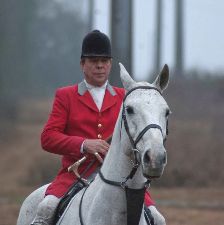 Author Hugh Robards is huntsman of the Saxonburg Hounds (PA). / Alex Farnham photoThe foxhounds of the Saxonburg Hunt in Pennsylvania now have a winter kennel in South Carolina of which full advantage is taken from January 1 to the end of March each year. Since Mr. Floyd Wine, MFH invested in property close to the small town of Salley (population about 450 and home of the annual Chitlin Strut!), the harsh Pennsylvanian winters are no longer an obstacle to continued hunting.
Author Hugh Robards is huntsman of the Saxonburg Hounds (PA). / Alex Farnham photoThe foxhounds of the Saxonburg Hunt in Pennsylvania now have a winter kennel in South Carolina of which full advantage is taken from January 1 to the end of March each year. Since Mr. Floyd Wine, MFH invested in property close to the small town of Salley (population about 450 and home of the annual Chitlin Strut!), the harsh Pennsylvanian winters are no longer an obstacle to continued hunting.
As the country hunted is shared with the Edisto River Hounds it was decided this year to have a Hunt Festival Week. Each pack hunted on alternate days with tailgate parties, dinner parties, and a Hunt Ball thrown in for good measure.
Who Carries the White Whip?
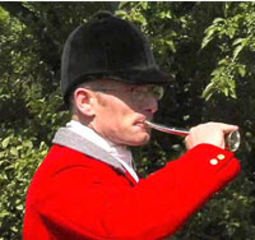 Huntsman John Tabachka“Are MFHs supposed to carry white whips?” asks John Tabachka, huntsman for the Sewickely Hunt (PA).
Huntsman John Tabachka“Are MFHs supposed to carry white whips?” asks John Tabachka, huntsman for the Sewickely Hunt (PA).
While there are slight differences in the answers from our experts, the common thread seems to place the white whip properly in the hands of those who deal with hounds in the field, either as huntsman or whipper-in. That said, as always, the Master may do anything he or she likes!
One thing you can always count on from Foxhunting Life's Panel of Experts: they speak their minds!
